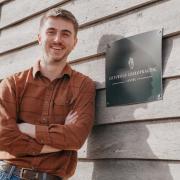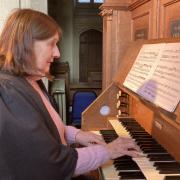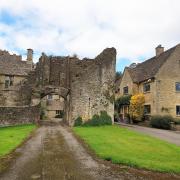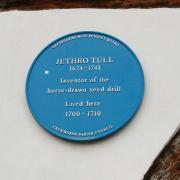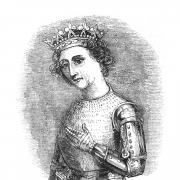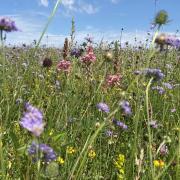I’m not from the Cotswolds, but the roots of my family tree are planted firmly in its soil. My ancestors farmed its fields for hundreds of years, until my grandfather moved to Hampshire just over a century ago. He took with him a rich collection of family records, farm accounts and memories. As he neared his 100th birthday, he shared them with my mother, Eleanor, who had married into the family and had always been fascinated by history.
He died at 101 in 1983 with his memory still razor sharp. Over the next few years, my mother built on his memory and records; eventually teaming up with historian Mary Abbott to write Yeomen of the Cotswolds – a history tracing the family back to the 14th century. That was 30 years ago, and last year my father David (the youngest of nine) died and my mother entered a Bristol care home. This left us with a dozen boxes of unsold books. We distributed some among the large family network who didn’t already have a copy. But what to do with the rest? Knowing the love, care and work that had gone into writing the book, a trip to the local tip was out of the question. My wife Anna and I decided that copies would be most at home if left in the places in which their story began.

So, one wet weekend in July, we packed five boxes of books into the car at our home in Kent and set off for the Cotswolds. My mother’s dementia meant she was unable to join us, but we were able to gather up en route my brother, Jon, who’s returned to the southern tip of the area, and our cousin Joanna, in Fairford. The plan: to donate books to libraries and charity shops and leave copies in village churches mentioned in the book. Each contained a note explaining the significance of the book, along with my email address in case anyone had any feedback.
We got off to a good start – meeting the chair of the local history society in Lechlade’s great community library. Then off to Southrop church and to the farm where my great grandfather was born in 1844; books were left at both destinations.
Much of Yeoman of the Cotswolds describes everyday life at the family farm in Holwell, which we know about largely thanks to an account left by my great uncle Gerald. At 460 acres in the 1870s it was big by the standards of the day and provided employment for many. There is the Trinder family, who had 16 children, with Mrs Trinder living to 90. The Matthews family foresaw the success of another son of Cotswold soil by calling their son Caleb – with his brothers Selim, Ezekiel and Homer holding positions such a plough boy, ox boy and under-shepherd.


Gerald’s description of the farmhouse goes into great detail about the kitchen and its outhouses, which included a potato cupboard, bread oven, washroom and bacon racks. A note in the family accounts ledger from 1876 reports: ‘Hired Lydia Brunsdon £3 and if a good girl promised her a new dress.’ She stayed for 33 years, with her wage rising to £33 and 10 shillings a year. Hopefully she was gifted two or three new dresses in that time.
The next destination on our trip was Westwell. Today its pond is a feature that enhances its Cotswold charm, but for hundreds of years it was a functional place in which Cotswold sheep and their fleeces were washed. These sheep were, of course, the basis of the area’s wealth – a wealth on which such villages and churches were built. The cover of Yeomen of the Cotswolds features a painting of our ancestor William Lane, proudly standing among his Cotswolds sheep, winners of first prize at the 1861 Royal Show.
Much of the land around Holwell and Westwell was owned by the Bradwell Grove Estate, now the home of the Cotswold Wildlife Park. We dropped off a couple of books there and soon heard from current owner Reggie Heyworth, thanking us for them and saying that his father had had a copy and found it a fascinating account.



The next stop was Shilton, where we dodged the rain to visit the church and then headed to the Rose and Crown pub for a restorative sandwich and a pint of Adam Henson ale. Shilton was where Great Uncle Gerald farmed. A few days after our visit, I got a lovely email from resident Jean Roberts, who had known villagers who knew the Porters and was able to give more details of farming and family life in the village.
In bustling tourist-filled Burford, we were diverted by what we felt sure was a Sleb Spot: ex James Bond Timothy Dalton trying to escape the rain. Up until the early 20th century, though, it was farming, not visitors (celebrity or otherwise) that kept Burford busy. It was at The Michaelmas Fair held here in 1872 that my great grandfather Thomas Porter, looking to hire workers, first met shepherd John Winfield, his trade identifiable by the wool in his hat (if Thomas had been looking for a cowman, it’d have been the braid of a cow’s tail he’d have looked for).


A couple of weeks after the fair, the book explains, a farm waggon brought shepherd John, his wife Eliza and small son William to the farm to make home in small cottage. Another nine children were to follow, and over the years he became a much valued and perhaps even loved part of the farm. He followed the Porters in their momentous move from the Church of England to the Plymouth Brethren, and there is an account of him sitting in a Windsor chair – which is still in the family – in a prayer meeting held in the farmhouse kitchen. When Thomas Porter died in 1914, John was left £15 in his will and stayed in his cottage until his death soon after.
The highlight of our trip to Burford was a visit to the Tolsey Museum – a treasure trove of local artefacts, from clothes to toys, paintings to pottery, overseen by a dedicated band of volunteers. Luckily for us, our visit coincided with Keeper of Collection’s Chris Walker’s stint on duty. We were thrilled to hear he’d already read Eleanor’s book and, in the conversation that followed, we learned that he, too, was from farming stock and that we had ancestors in common, including the Garne family, famous as brewers in the town. I’m so sad, as I write this, to hear of Chris’s death earlier this year. His natural warmth, and commitment to his community in Burford and beyond was so evident, even in our brief meeting with him.


It was Chris who pointed us to the Plymouth Brethren meeting house in Burford, which the Porters moved to when numbers of worshippers grew. We took a detour past it on our way to the Baptist Church graveyard where many ancestors, including my great grandparents Thomas and Mary, are buried. A visit was also a tribute to my father, who for many years regularly made the trip from Hampshire with his lawnmower to tend those graves and the yard itself.
The rest of our trip was spent visiting other locations mentioned in the book, including Little Barrington and the Slaughters. A telephone box library in Quenington is now the owner of a copy (as is a similar set up in the East Kent village where my mother grew up). Over the weekend, we dropped copies off at charity shops throughout the Cotswolds, too, including in Fairford and Cirencester.
What was special about the trip was the connection made with both places and people. There was the interest from people we met on the weekend and then the very special messages we had from farmers, church wardens and others in the following days, thanking us for sharing our family history with them.
The Cotswolds may have changed from the days when they were farmed by the Porters, but the echoes of the harvests the family celebrated, the sheep sales they haggled at, the hymns they sang and the conversations they had continue to sound down the centuries.












